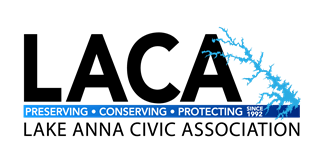By Sue Biondi – December 2021
I hope everyone found the health article in the September newsletter helpful. To continue in my series of articles pertaining to living a healthy lifestyle in the lake environment, I would like to address a topic that may affect you more than you realize. We recently returned to Eastern Standard Time after enjoying longer hours of daylight during Daylight Savings Time.
Seeing the sunset during the summer after 8:00 PM offered us time to spend outdoors in the evening, perhaps going for a long walk or playing with the family in the yard after dinner. Or maybe you took out the boat or pontoon and raced to the western shores to enjoy watching the sun go down below the horizon and watching the show Mother Nature has to offer. But then comes the late fall and time to turn those clocks back, which greatly shortens the amount of daylight come around 5:00 PM. Did you ever think this doesn’t affect you? Let’s take a look.
Many of us have different thoughts about turning the clock back. Some who work and live very busy lives are happy for the extra hour of sleep. On the other hand, many are dreading the darkness that comes late afternoon. But those who are not doing well making the adjustment may be suffering from what experts from the National Institute of Mental Health call “Seasonal Affective Disorder” (SAD). It usually affects people, as imagined, in the fall and winter when daylight is shortened, and disappears in the spring and summer.
People who live in normal areas of shortened daylight as well as those who suffer from depression or bipolar disorders, young adults, and females are mostly affected. Experts believe the lack of light may interfere with the sleep-wake cycle and circadian rhythms. They may also overproduce melatonin, a naturally occurring chemical that aids sleep. Other nervous system components may be affected.
Some signs, symptoms and most at risk groups follow: 
- Feelings of sadness or hopelessness
- Decrease in energy and ability to concentrate
- Increased appetite and weight gain
- Irritability, moodiness and sleepiness
- Social withdrawal
A thorough physical exam, which includes a mental assessment, helps to confirm a diagnosis. Treatment, as well as prevention, includes medication (antidepressants), light therapy, which mimics natural outdoor light, psychotherapy and supplemental Vitamin D, which remains controversial. Recommended is opening blinds and shades, trimming branches or shrubs that may be blocking sunlight from entering the home, and exercise, which can help elevate mood and relieve stress.
Another situation to consider that may adversely affect health and well-being, especially in older adults, infants and young children,is hypothermia, defined as a decrease in body temperature, usually caused by prolonged exposure to cold.  Other causes include diabetes and thyroid disorders, severe trauma, and alcohol and drug use. Normal body temperature is about 98.6 degrees F. In hypothermia, the body temperature falls below 95 degrees. About 90% of body heat is lost through the skin and the rest through exhalation. As the body temperature decreases, shivering occurs to produce heat. The effect is lower heart rate, slower breathing, which may lead to shock, cardiac arrest and death. Categories of hypothermia include:
Other causes include diabetes and thyroid disorders, severe trauma, and alcohol and drug use. Normal body temperature is about 98.6 degrees F. In hypothermia, the body temperature falls below 95 degrees. About 90% of body heat is lost through the skin and the rest through exhalation. As the body temperature decreases, shivering occurs to produce heat. The effect is lower heart rate, slower breathing, which may lead to shock, cardiac arrest and death. Categories of hypothermia include:
Mild hypothermia - Temperature 90-95 degrees F, severe shivering, slurred speech and amnesia.
Moderate hypothermia - Temperature 82-90 degrees F, unresponsiveness, confusion, rigid muscles, bluing of skin (cyanosis) and shock
Severe hypothermia - Temperature below 82 degrees F, loss of reflexes, dilated pupils, inability to feel a pulse and no audible heart sounds.
Treatment includes CPR in the absence of breathing or pulse, moving the person to a warm, indoor area, removal of wet clothing if indicated, followed by applying layers of blankets or coats. The head should be covered except for the face. If the person is alert, provide warm, non-alcoholic and non-caffeinated beverages. Do not apply warm compresses as this would increase the heart rate and circulate the cold blood through the heart, lungs and brain, which may cause a decrease in core body temperature which could be fatal. If advanced medical treatment is available, warm intravenous fluids may be administered.
Prevention should be discussed with family and especially people who work or exercise outdoors. They include:
- Wear warm, windproof and waterproof layers of clothing.
- Wear mittens instead of gloves so fingers can touch each other for warmth
- Wear waterproof footwear with woolen socks placed over cotton socks
- Wear a scarf or hat that covers the ears
- Avoid alcohol or smoking
- Avoid prolonged exposure to the cold.
I hope this article helps to guide you through the winter months ahead of us and keeps you safe. My next article will include tips for dealing with the dreaded snow that may or may not affect our area and the related activities that the snow brings.
sue.biondi@lakeannavirginia.org
